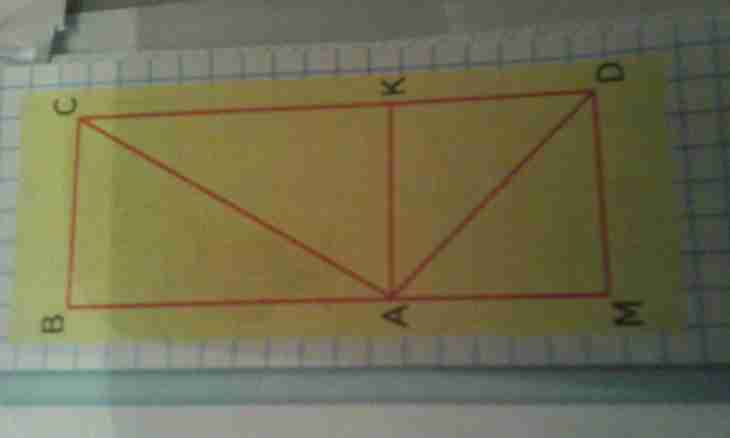Triangle perimeter – the sum of lengths of its parties. It is required to find triangle perimeter often both in problems of initial geometry, and in more difficult tasks. At their decision the missing sizes find from other data. The main dependences of perimeter of a triangle on its another dimensions are reflected in this instruction.
It is required to you
- - handle;
- - note paper.
Instruction
1. The simplest case – to find triangle perimeter if its all three parties are known. Put lengths of all parties.
2. If in a triangle two parties and a corner between them are given, find length of the third party from the theorem of cosines: a2 = b2 + c2 - 2bc*cosa, where a, b, c – the parties of a triangle, cosa – a cosine of the angle between the parties of b and page.
3. The third case – apply the theorem of sine if one party and two corners of a triangle is known: a/sina = b/sinb = with / sinc = 2R. Where a, b, c are the parties of a triangle; sina, sinb, sinc are sine of corners, opposite to these parties; R – radius of a circle which can be described around a triangle. Find the third corner subtraction from 180o two corners, known in a condition. Define the unknown parties of b, c: b = sinb*a/sina; c = sinc*a/sina.
4. Use the same theorem if you have a triangle inscribed in a circle with the known radius. Also triangle corners are given. Find the parties of a triangle: a = 2R*sina; b = 2R*sinb; with = 2R*sinc.
5. The fifth example – calculate perimeter of a rectangular triangle if its hypotenuse and one of legs are known. Calculate length of the second leg from Pythagorean theorem: b = (c^2-a^2) ^1/2 where a, b are rectangle legs; with – its hypotenuse.
6. The sixth example – is given a rectangular triangle at which the party and an acute angle is known. In a task it has to be specified, the known party is a leg or a hypotenuse. What is its perimeter equal to?
7. Find missing data for calculation of perimeter, using trigonometrical dependences: = c*siny; b = c*cosy; = b*tgy. Where a, b are legs, with - a hypotenuse, y – a corner, opposite to a leg and.
8. The seventh example – similar triangles at which the sizes of their skhodstvenny parties or coefficient of similarity are known are given. Lengths of three parties or perimeter of one of them are specified. It is required to find perimeter of the second.
9. For the decision find similarity coefficient: k = a ’/a, where an’ and and – the skhodstvenny parties of triangles, i.e. the parties, opposite to identical corners. Then find perimeter of one triangle. If the parties of a triangle are not set directly, calculate them, having applied a step 2, 3 or 4. Calculate perimeter of the second triangle: P = P ’/k, where P, P’ – perimeters of similar triangles.

